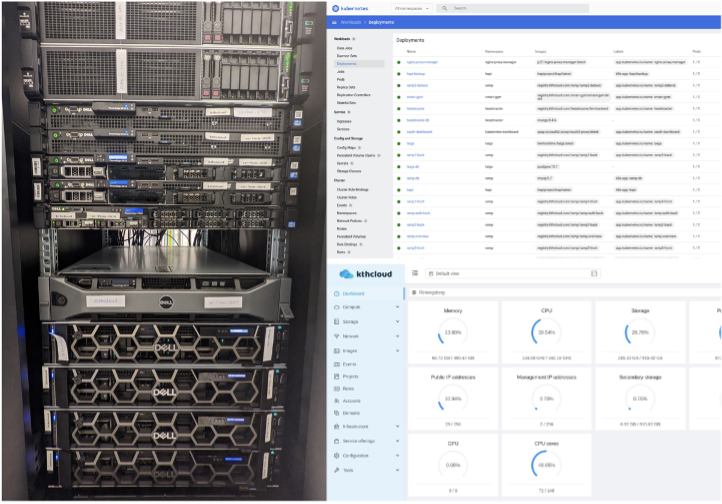What is a software makerspace and how can we use it in education?
Format: Makerspace - demonstration - discussion
Stage of the project: Mid stage
Room: D33
Time: 12:00 - 16:15
Background and purpose
A makerspace or a Co-creation space, today is focused on turning ideas into physical prototypes by providing resources in terms of tools and infrastructure. In a university, a makerspace provides students with an opportunity to build a portfolio. Students experiment through an entire development life cycle by creating prototypes for each stage of a cycle. In a survey of engineering studies done in [6] 80% of the respondents replied that “Makerspace enabled them to be more confident to translate engineering concepts to non-engineers”. There are other papers [5] and [4] that also emphasise the pedagogical importance of a makerspace facilitating problem-based learning.
To the best of our knowledge, software development is yet to be included in the makerspace concept. We present our initial approach to extend the concept of a makerspace to software development using a private cloud. Thus, creating a future learning enviorment, and would like during the round table to get feedback and new input of what software makerspace is or should be used in education.
Finished work/ongoing work
While there are many commercial public could services, we have observed the following challenges with their use in an academic setting:
- Cost; a wrongly built system on a commercial cloud can cost a fortune, ML will always cost a lot. There is also another problem connected to cost connected with the academic funding system works with a different cycle not suited to a subscription model.
- Pedagogic; building our own system will let students learn how to build and maintain a cloud. This includes multiple know-how, from IP address configuration to handling complex or non-standards hardware. Understanding end-to-end life cycle of an application.
- Sustainability; the student-maintained cloud has partially been built by reusing old hardware and once there it also provides the possibility to share the available hardware.
Hence the need for a private cloud, during the student project [7] carried out by Emil and Pierre, Apache CloudStack was identified to be the most promising cloud implementation. Included below are a figure picturing the current hardware (on the left), current apps running in the cloud (on the top right) and the computer power available on the cloud (on the bottom right).

Results/observations/lessons learned
The project carried out by the students has realised a student-maintained cloud for rapid software prototyping following industry standards.
The cloud currently is used to offer the following services:
- Students of the software engineering course have to develop prototypes of simple micro-services which are currently being deployed in the cloud. Each student can get access to their own cloud account without any resource or time limitations.
- The cloud was also used to demonstrate research projects by students who implemented a HAPI FHIR (Fast Healthcare Interoperability Resources) [1] based on serveras part of a course on medical engineering.
- There are two instances of Jupyter [2] running with access to GPU based VMs.
- Finally, the cloud now also hosts an instance of the Taiga [3] an open-source agile project management tool to train students in agile software engineering practices.
Take-home message
It time to let your student or reacher built there own private cloud.
References
- Hapi fhir - the open source fhir api for java. URL https://hapifhir.io/.
- The littlest jupyterhub — the littlest jupyterhub v0.1 documentation. URL https://tljh.jupyter.org/en/latest/.
- Taiga: Your opensource agile project management software. URL https://www.taiga.io/.
- From making gadgets to making talents: exploring a university mak- erspace. Education + Training, 62(2):145–158, 2020.
- . P. M. C. . L. B. . N. R. L. . L. J. S. . T. K. G. . F. C. R. . N. W. C. Barrett,
T. W. A review of university maker spaces paper presented at 2015 asee annual conference exposition, seattle, washington. 2015. doi: 10.18260/p.23442.
- F. . A. H. . L. C. Galaleldin, Mohamed Bouchard. The impact of mak- erspaces on engineering education. Proceedings of the Canadian Engi- neering Education Association, 2017. doi: 10.24908/pceea.v0i0.648.
- P. Le Fevre and E. Karlsson. Designing and implementing a private cloud for student and faculty software projects, 2022.
